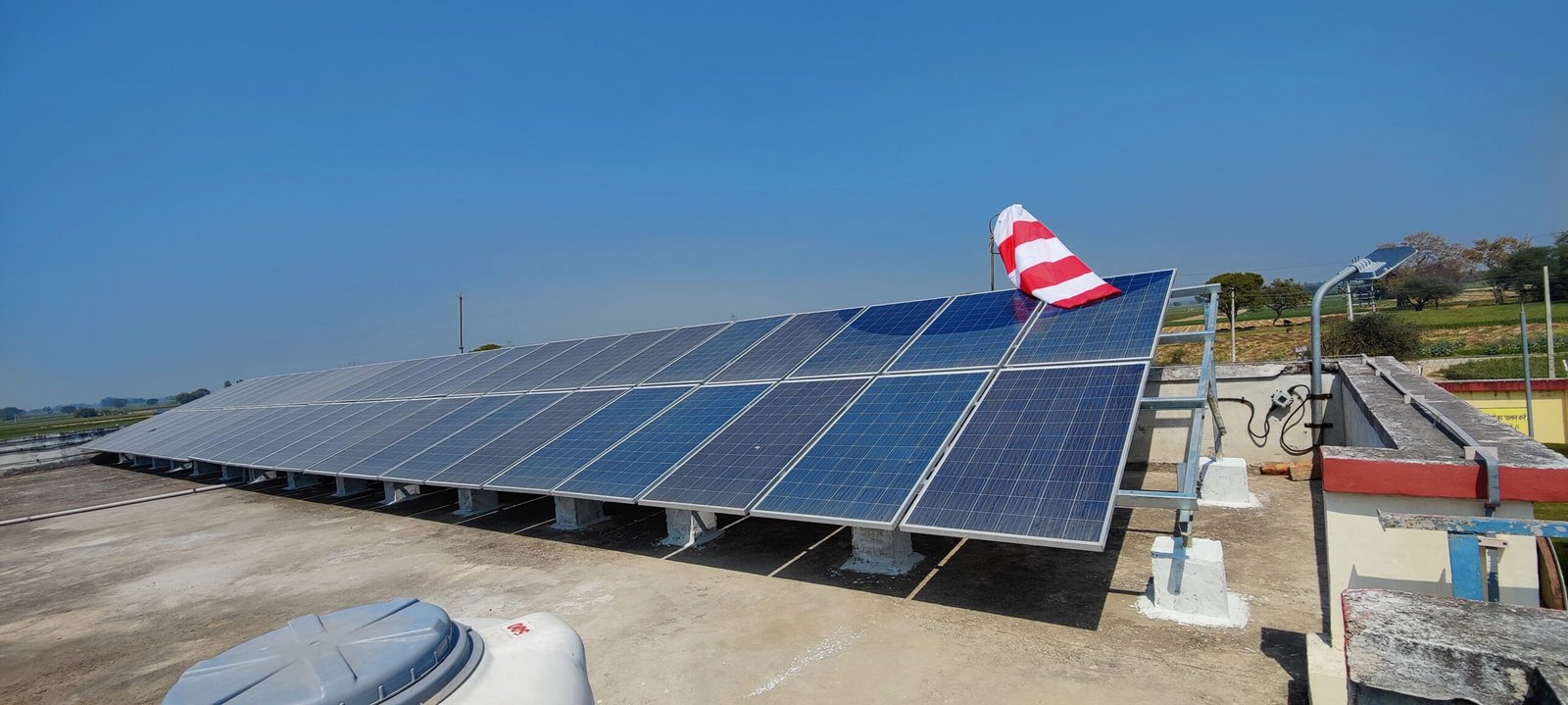Services We Provide
Independence with Sustainable Energy
A hybrid solar power plant integrates the benefits of both on-grid and off-grid systems, providing a reliable and flexible energy solution. Here’s a detailed breakdown of how it works:
- Solar Panels: Solar panels capture sunlight and convert it into direct current (DC) electricity using photovoltaic (PV) cells.
- Inverter: The DC electricity is sent to an inverter, which converts it into alternating current (AC) electricity. AC is the form of electricity used by most household and industrial appliances.
- Battery Storage: Excess electricity generated by the solar panels is stored in batteries. These batteries provide power when the sun isn’t shining, such as during nighttime or cloudy days, ensuring continuous electricity supply.
- Grid Connection: The hybrid system is also connected to the utility grid. When the solar panels and batteries can’t meet the energy demand, the system draws electricity from the grid. Conversely, if there is surplus energy, it can be fed back into the grid, often earning you credits through net metering.
- Charge Controller: A charge controller manages the flow of electricity from the solar panels to the batteries, ensuring efficient charging and preventing overcharging or deep discharge, which can damage the batteries.
- Backup Generator (Optional): In case of prolonged periods without sufficient sunlight, an optional backup generator can be used to recharge the batteries and provide additional power.
- Energy Management System: An intelligent energy management system optimizes the use of solar power, battery storage, and grid electricity. It ensures the most efficient and cost-effective energy supply by prioritizing solar energy and battery storage before drawing from the grid.
- Electricity Usage: The AC electricity from the inverter powers your home or business directly. When the solar panels generate more electricity than is being used, the excess is either stored in the batteries or fed back into the grid.
Off Grid Solar Plant


